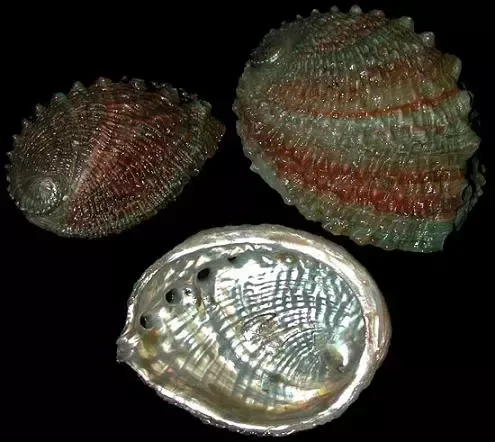One Ruff Back Rainbow Abalone measuring 4 to 6 inches. ****
One Ruff Back Rainbow Abalone, measuring 4 to 6 inches.
Orders usually process within 2 to 5 business days.
Email us at ja1@mindspring.com Make Your Selections and Shipping Preference. We Will Email You the amount of the Shipping Cost. When you receive the shipping cost go back into Shells of Aquarius and click into Purchase Shipping Label. There you will find UPS or USPS. Click into the option you decided on and make your payment. Your order will ship when shipping payment is received.
Rainbow Ruff Backs are found near the Mexican coast. They are naturally rough on the outside and pearlized inside. Haliotis Rufescens is tshe scientific name.
Female members of dioecious molluscan species (red abalones) have been known to be more common than males. In populations that experience human predation, this difference can be exacerbated, as is the case with populations of Haliotis rufescens. From 1972-1973, researchers studying red abalone populations at Point Cabrillo Lighthouse Station and Van Damme State Park found that the level at which human predation occurs can have profound effects on the age class structure of each population. For many years, the abalone at Van Damme were heavily fished and the population structure reflected a notable lack of larger, older individuals. At Point Cabrillo, however, abalone harvesting had been halted for some time, and populations of red abalone showed the development of a natural age class structure and sex ratio.
Because of the destruction of most wild populations, abalone farming has become a booming business. Unlike some aquaculture operations, the farming of abalones is considered to be a form of sustainable agriculture. Few chemicals are used in the process and the abalones are fed locally harvested kelp and algae, which promptly grows back in abundance.
In 1916, documentation of the modern California fishery began. Fishing for these abalone populations peaked in the 1950s and 1960s and was followed by a decline in all five abalone species, red, green, pink, white, and black. Prior to this point, the fishery seemed sustainable with the increase in species that could be fished and the expansion of fishing areas. Disease and the recovery of sea otter populations contributed to the decline of the abalone, and the California Fish and Game Commission ended fishing for abalone in 1997.
